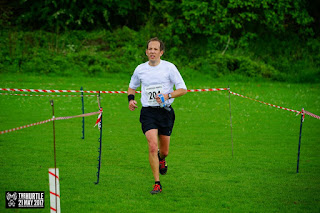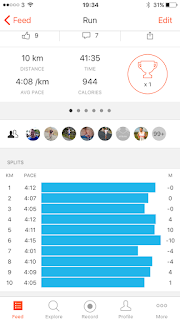My younger sister battled with cancer for nearly four years and in the last month was told that it had spread to other parts of her body and time was limited. Less than four weeks later she is no longer with us and I find myself reflecting on what running has done to ease the tough times.
1. Headspace: When we receive bad news we all have different mechanisms to deal with this. Some like to talk things through with others but I prefer to grab some space and have those conversations in my own head. In recent weeks I've hit the trails more when running as I find this more conducive to reflection. Also, you often find less people around so get a real sense of being on your own. Within a few hours of receiving news that I was successful in getting a new job I was told about the troubles that my sister faced. As I got home my wife knew exactly what I would be doing next once I shared the bad news. My usual training sessions were out of the window and it was about spending time on my feet, often with speed bursts to help with feelings of anger. My wife feels I am dealing with things very well and I believe that time for headspace and the amazing support of family and friends enables this.
2. Charity work: There are many people that pick a race and gain sponsors as they train for that particular event. As a runner this didn't make sense in my circumstances so I decided to do something different. I've built a list of running events and have set up a just giving page to raise funds for Willow Foundation trust. It is a charity that helped my sister in the early days and provided her with a break away from things. The impact of this on my sister and her two children was remarkable so I wanted to repay this generosity. Multi-events became the challenge and I incorporated some different challenges into it that would definitely test me. The Hathersage Hurtle 20 mile race took me into new distance territory and was the most challenging race yet. The terrain and 20 miles mixed with over 750 metres of climb took my body into new territory. Knowing that I was doing it for charity and the thought of my sister going through so much more pain than this spurred me on to complete the race. I had IT band trouble and found the last 8 miles very challenging but external motivation really kicked in. After the race I felt little satisfaction in my own achievements but a great sense of achievement in reviewing the fundraising total on just giving. The focus on raising funds for charity has brought our family together and they have shared how it has helped them to keep busy. Lots of sharing on social media and with friends has put my current fundraising total at £1590 which is fantastic. If you want to learn more about my sister's story or give please visit www.justgiving.com/runforstacy
Finishing the Hathersage Hurtle
3. Motivation: Today I completed the Derby Ramathon for my sister. She passed away just four days ago and I was very close to pulling out of the event. I even had those thoughts driving down the A38 to the event today as my training hasn't been great and I have a minor injury. However, I went ahead with it, with the sole purpose of running it for my sister. Niggles, high temperature, sore legs meant nothing as I was so driven to complete the course. By running at a slower pace I was also able to take in the atmosphere and fully appreciate the event. I've received lots of wonderful well-wishes on Facebook but the ones I have paid particular attention to are those which share people's wonderful memories of my sister. I'd usually put my time up on Facebook and a few selfies but today I simply posted this image:
Very proud family members (Spot the photo bomb!)
I gave my medal to my niece and my T shirt to my mum for memories. I know this meant a lot to them but it is a simple gesture to provide a positive memory in tough times.
These thoughts are just some of the ways that running has helped me and my family in recent weeks. It is infectious and can bring everyone together in the most challenging of times. My niece now wants to complete the Race for life in memory of her mum which is fantastic so it will soon be my time to be the supporter cheering her on.

















